New Moon Currents: Mild or Wild
Water temperature: 28-29C/83-84F and slowly dropping
A trip is always best when our guests get along and camaraderie is quickly developed between the guests. So, it’s safe to say this has been one of our most enjoyable trips on NAI’A, with great ambiance and loud laughter at every meal. Sure, Fiji’s great reefs and the amazing encounters we had throughout the trip contributed, but this group had serious entropy. Maybe that’s what attracted the mantas, hammerheads, massive tunas, several trevallies and a very friendly lionfish.
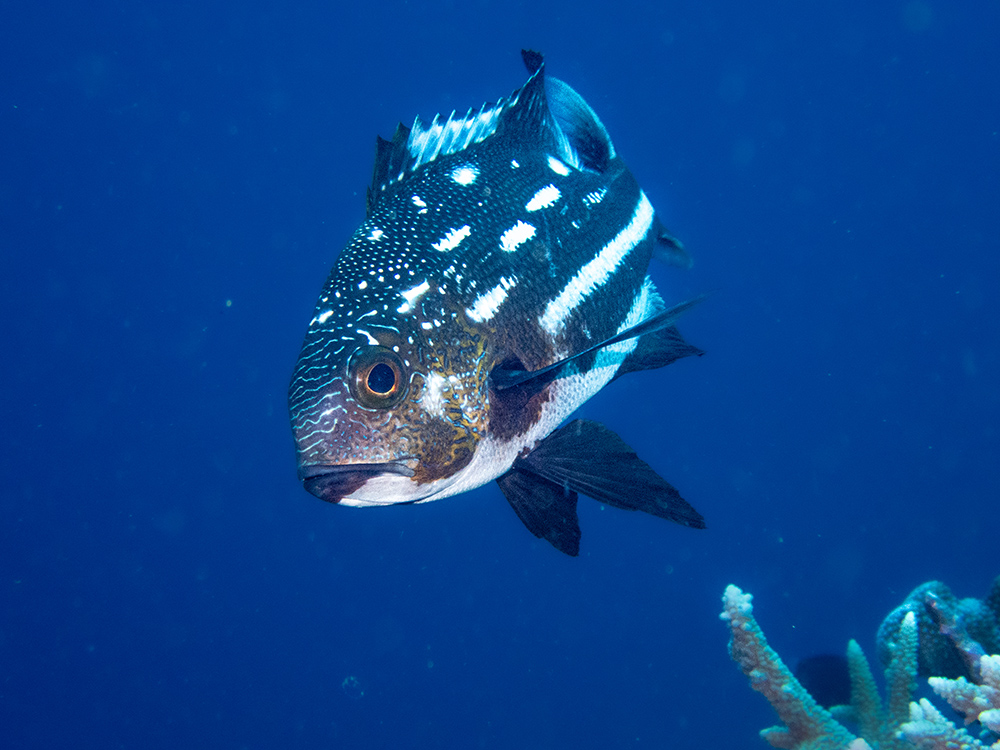
Photo by Bel (archive): Midnight snapper
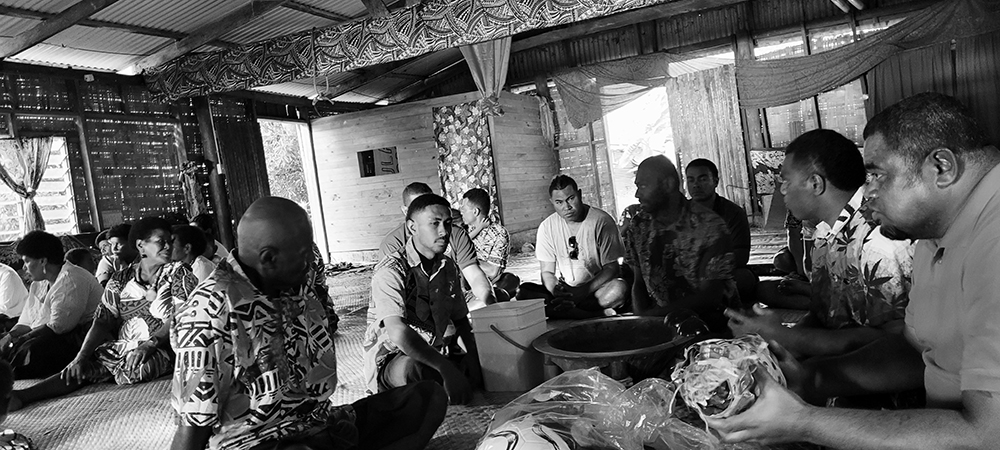
Photo by Mike: Village Visit
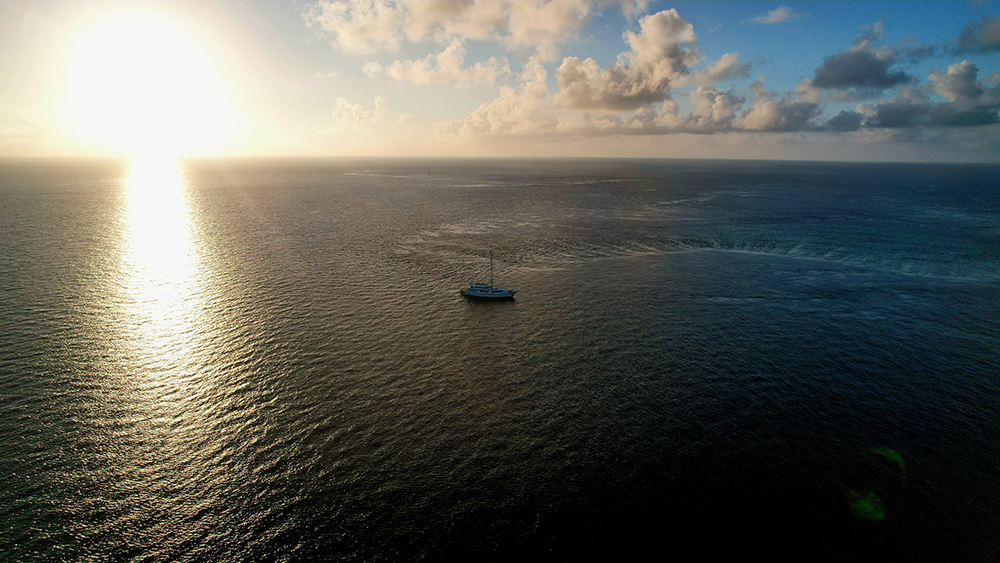
Photo by Mike: NAI'A at Vatu-i-ra with great weather to send us home
The weather was a little atypical for this time of the year, and the wind blew hard for the first couple of days. We spent our first full day of diving at Vatu-i-ra and managed to explore Mellow Yellow, Coral Corner and Maytag before having to shelter at Alacrity for our last 2 dives. Our morning dives were incredibly fishy (in a good way) and we watched grey reefs hunting at Maytag, several friendly white tips at Coral Corner, all the fish in the world on top of Mellow Yellow… and the vibrance only Vatu-i-ra can offer. The current was mild so we managed to relax as well as watch some serious action. At Alacrity we found shelter not only from the wind, but from the current that picked up as well. With the water so wild, we did not offer a night dive.
Our second day was just as windy, so we sheltered at Makogai for the day and searched for critters only Mako can offer. With the new moon approaching, the current was enough to put the anthias and fusiliers in active mode and entertain us at the top of our bommies. We saw midnight snappers feeding, a variety of nudibranchs and shrimpgobies, many redfin anthias (Teri is a BIG fan), a couple of wirecoral shrimp (sooooo tiny!) that posed for Joe, an octopus, scorpionfish, a few morays and even a pygmy seahorse (please stay in the same place, little man!)! Joni was the only brave night diver and she saw a huge pleurobranch.
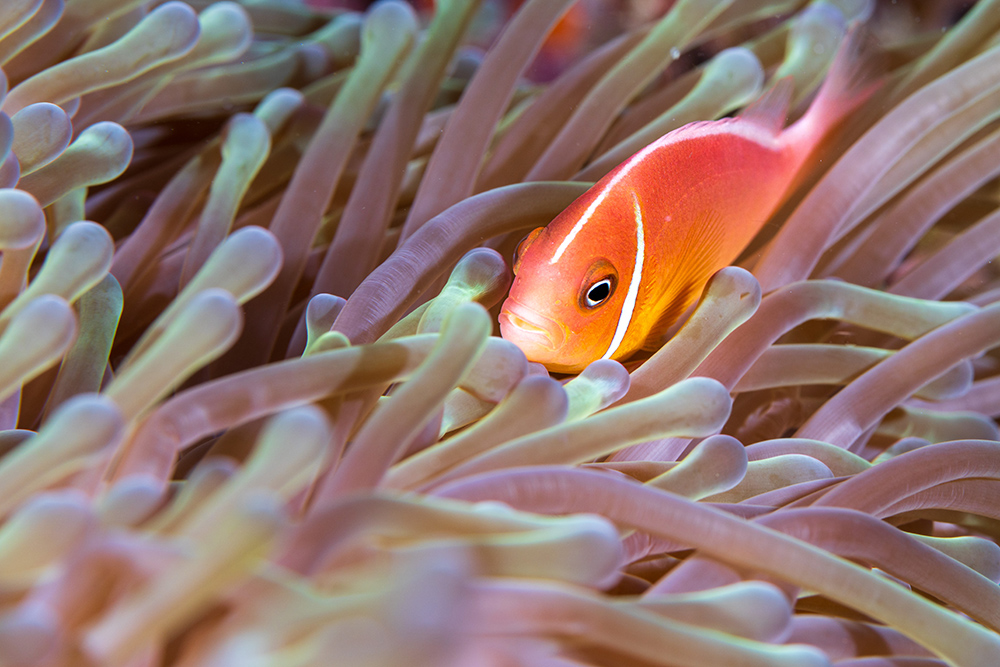
Photo by Joe: Pink anemone fish
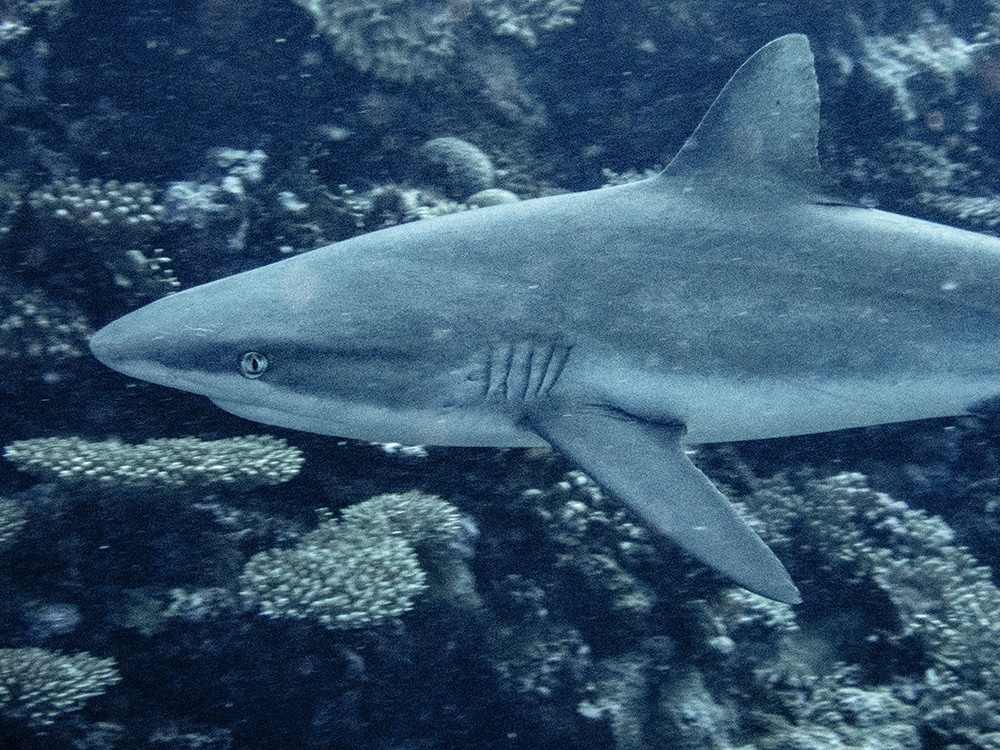
Photo by Bel (archive): Grey reef shark
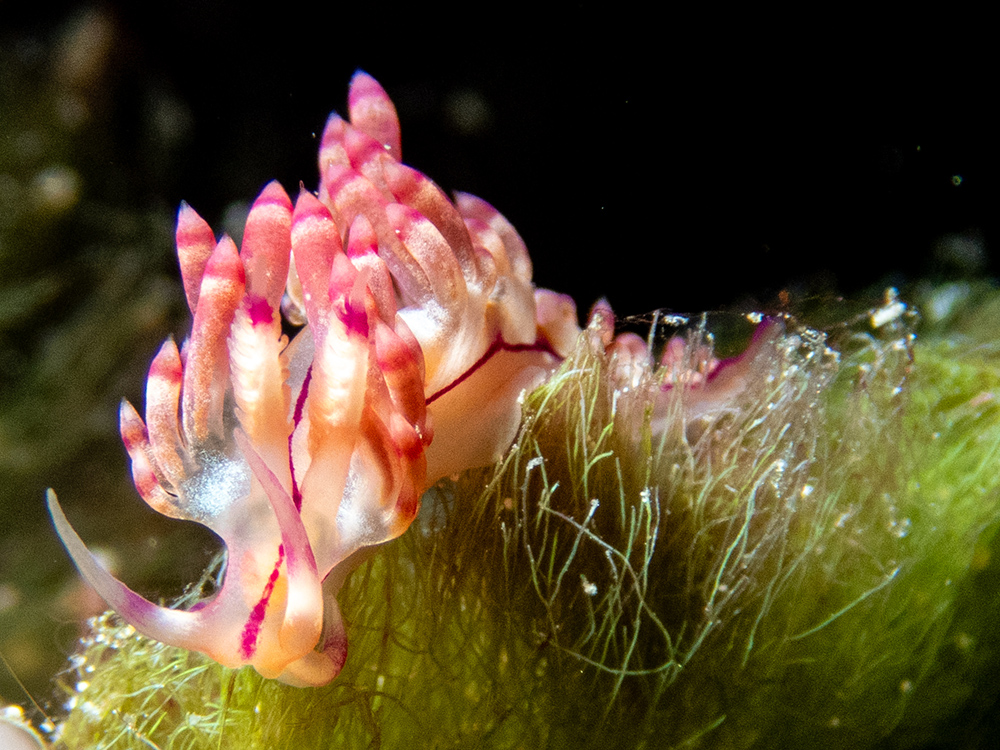
Photo by Bel (archive): Flabellina nudi
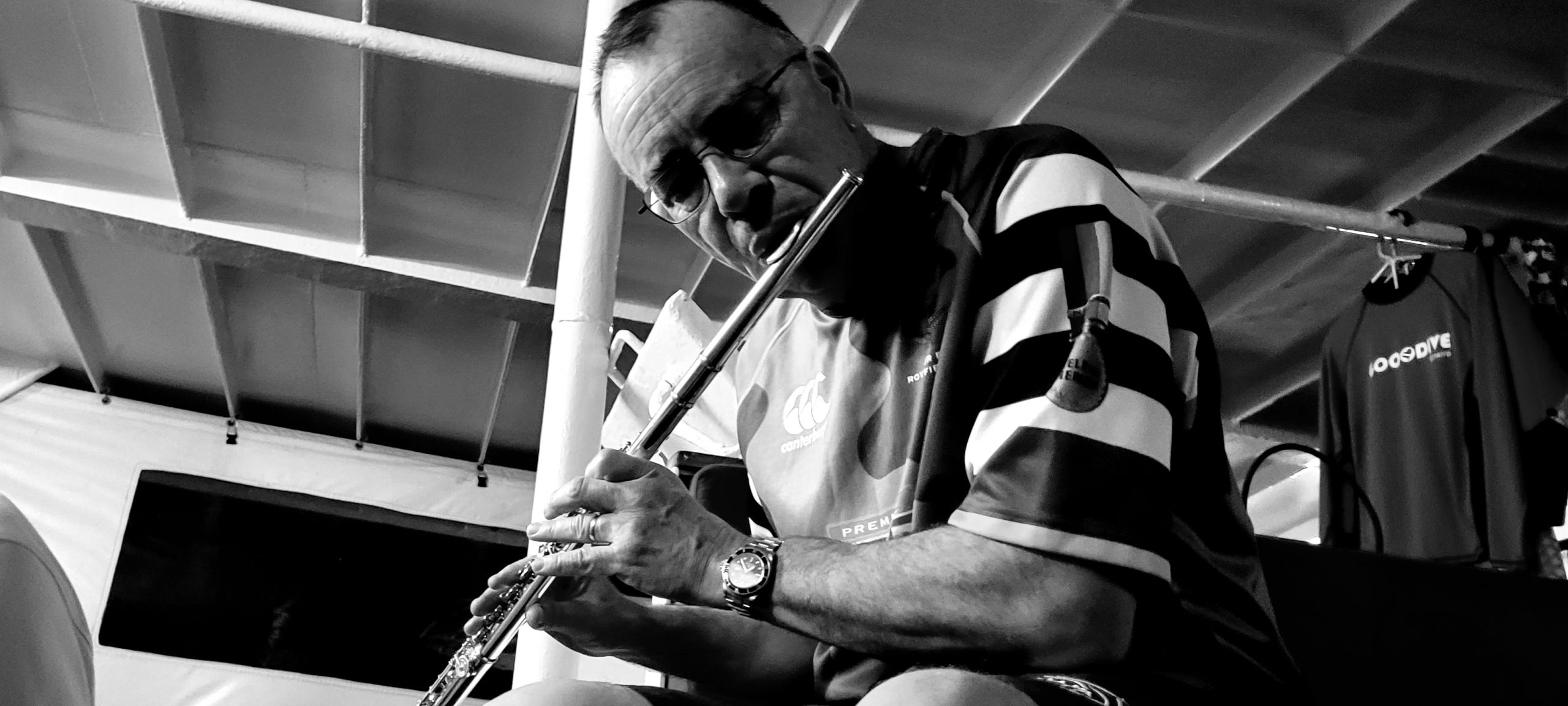
Photo by Mike: Alan joins the band
A bumpy ride brought us to Gau, where the current made sure we waited patiently for the right moment to hit the water at Nigali Passage. We saw several grey reef sharks (some mamas with huge bellies, some suitor action, some cute babies), big schools of black fin, pickhandle and bigeye barracudas, a big blotched stingray, a massive tahitian stingray, many bigeye trevallies and a beautiful turtle at the cabbage patch. At Jims and Anthias we saw a 5ft giant trevally and lucky lefty saw 3 mantas! I mean… some of them saw 3 mantas, Chris saw “3 idiots swimming like crazy at their safety stop” and Jonny just swam a lot. Our village visit was great fun as always, Alan and Jim S joined the girls dance, then Jim almost had to be carried out when he had to follow that up with the boys dance. At dinner there was talk of some controversial anti-snoring techniques, and after dinner Alan joined the crew on the dive deck with his flute, which made our crew sound even better.
Another day, another crossing, and we woke up at Wakaya, our favorite manta spot. Riley, Shirley, Bellerina and Johnny visited the cleaning station, but only Riley stayed for a long time. Still, they were curious enough to get everyone a nice viewing. We also saw a few turtles, a leaf scorpionfish, our eager cleaner shrimps, orangebarred garden eels, an octopus, schooling barracuda and milkfish, grey reef sharks and a couple of hammerhead sightings in the distance. On the night dive, mike found a beautiful platydoris and Bel got VERY excited about an elegant sapsucking slug. Richard, on his attempt to take a photo, landed his hand on a lionfish, so we finished the dive and nursed him back to “normal” before sending him back to Francine.
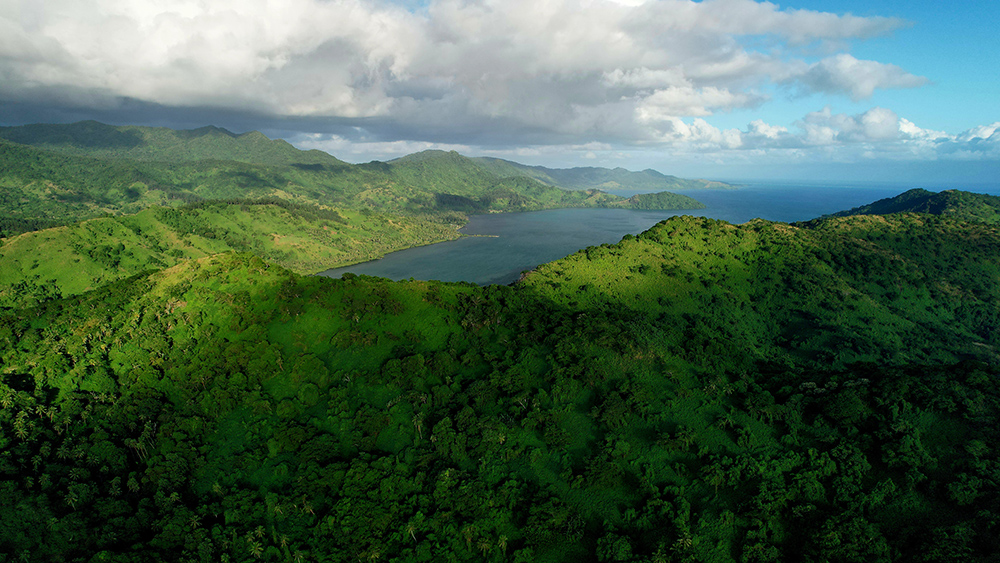
Photo by Mike: Gau from above
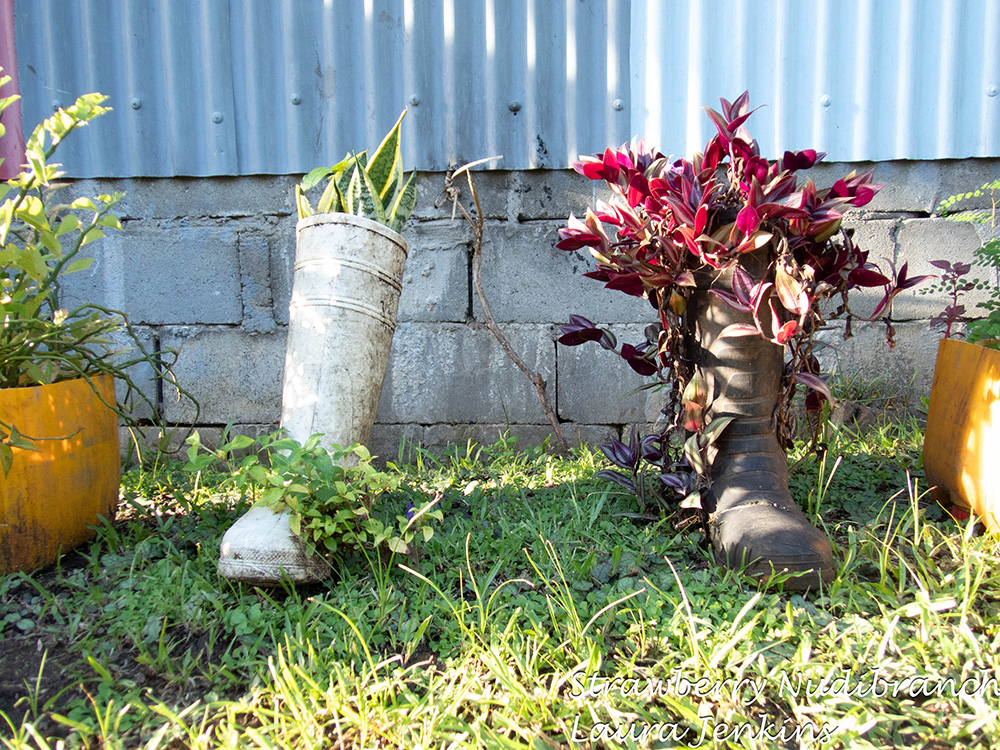
Photo by Laura: Creative plant pots at the kindergarten in Somosomo village
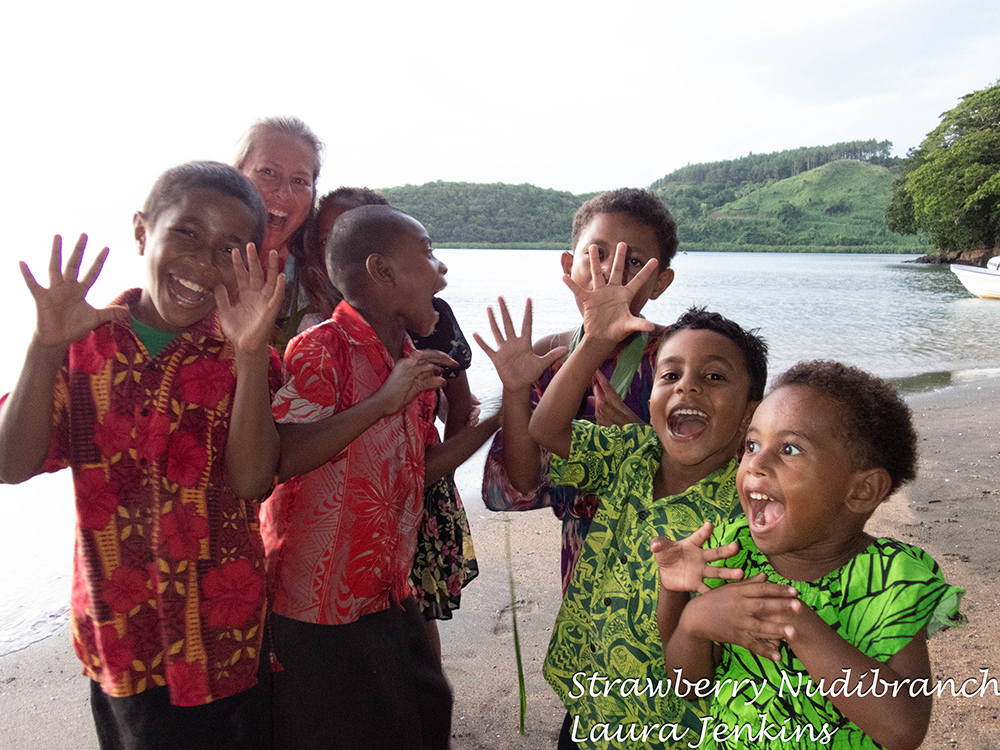
Photo by Bel: Laura and the kids
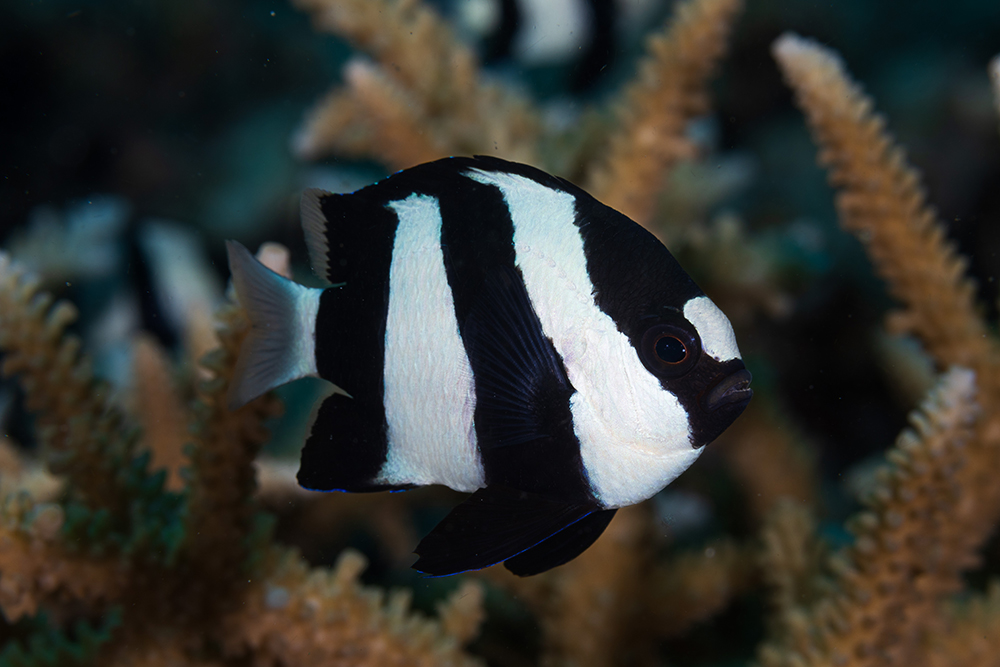
Photo by Joe: Humbug dascyllus
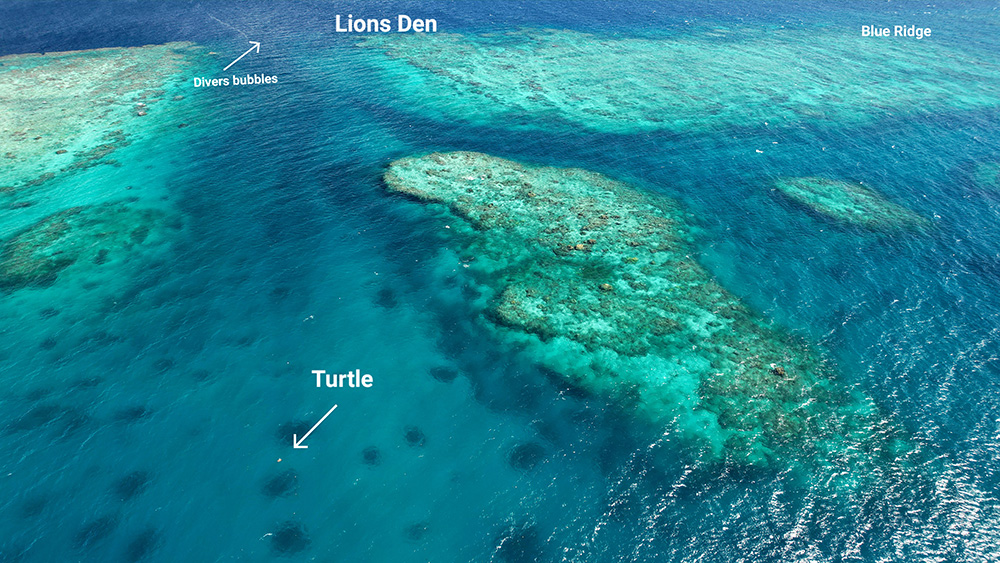
Photo by Mike: Wakaya from above
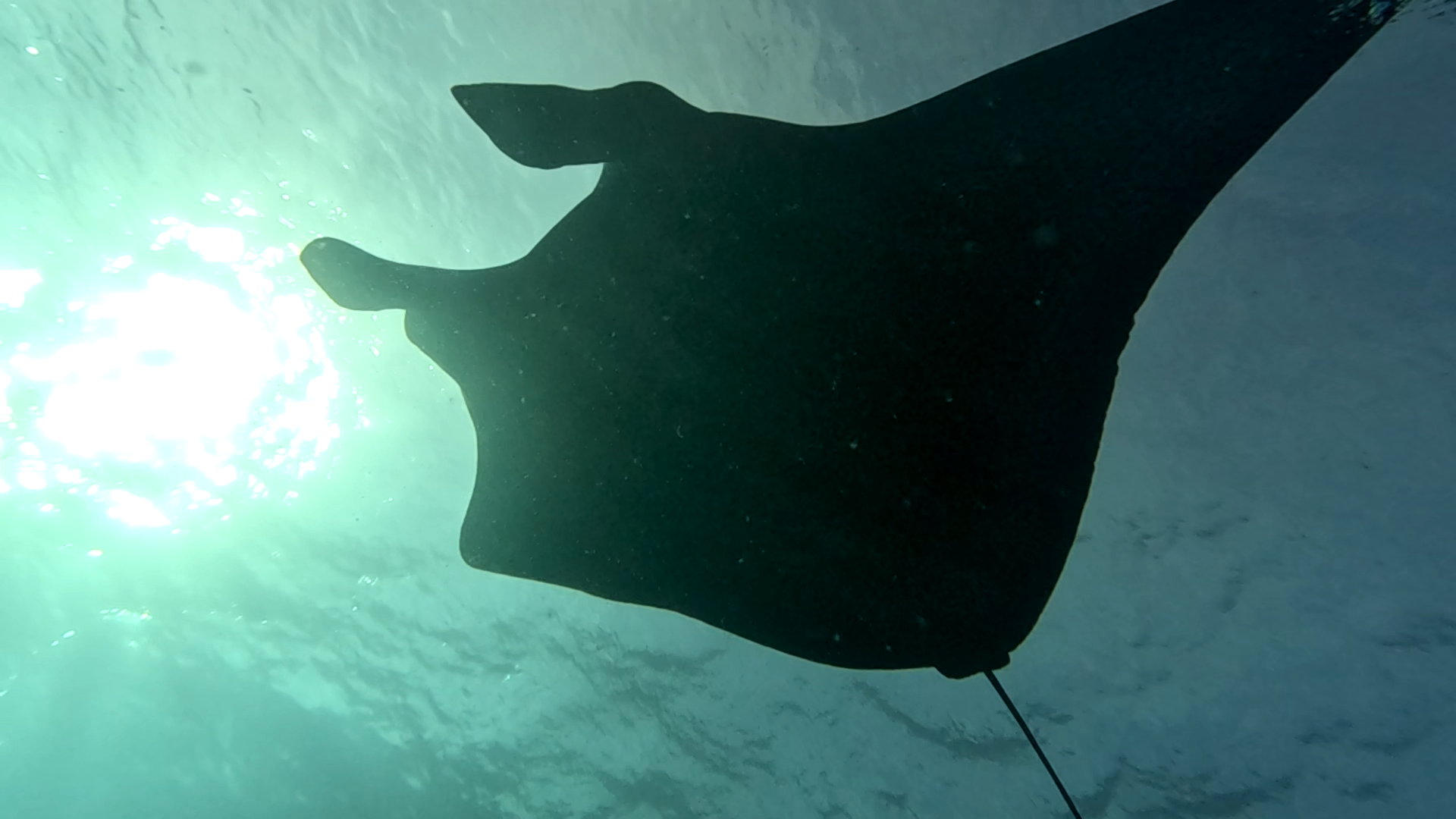
Photo by Bel (archive): Manta at Wakaya
The forecast failed us and our expected calm journey to Namena turned into the worst one of the trip. Still, it was Namena, so our guests dragged themselves out of bed and joined us for two days of incredible dives. The squarespot anthias were posing, the decorated dartfish cooperated, a couple of very shy ribbon eels played hard to get and an octopus dared to venture out of his home. We saw turtles, huge Spanish mackerels, humphead wrasses, golden mantis shrimps, ocean triggers, schooling bannerfish, palette surgeonfish by the dozen, a whitecap shrimpgoby, orangutan crab, several grey reef sharks, huge tunas, a few hammerheads, schooling bigeye trevallies and hundreds of scads and bigeye barracudas. Jim Q got his wish with the zebra dartfish and Megan lost and recovered her weight pocket. What a wild ride Namena is! We just had to navigate the currents, adjust the plans and, when all else failed, shelter from the unmanageable currents. Our kava party was wonderful as always, but we did discover Mighty Righty does not produce mighty goats. After so much wonderful diving, nobody had energy for the night dive.
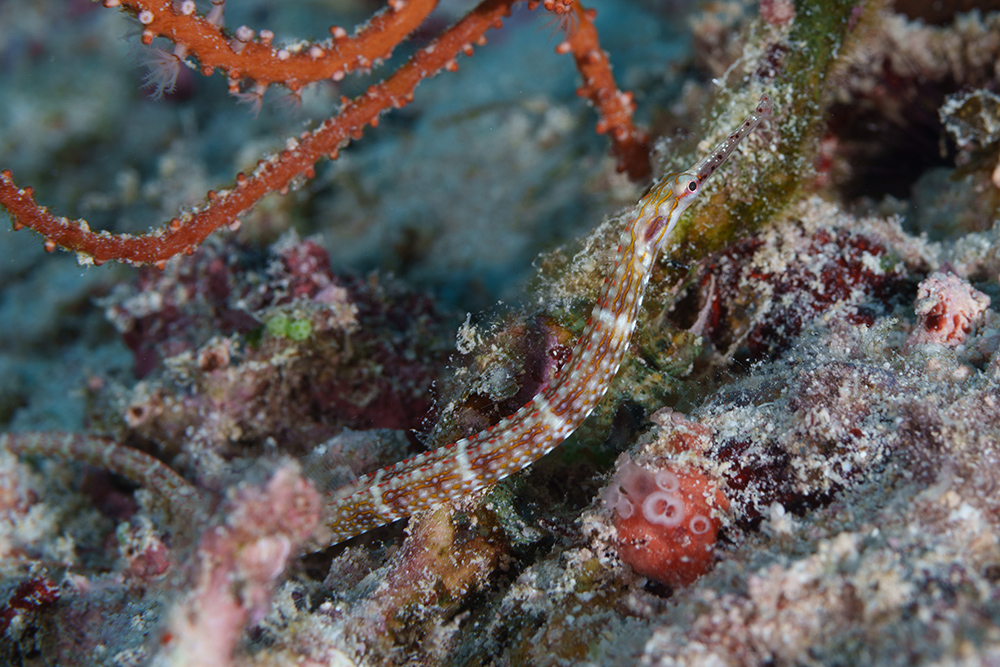
Photo by Joe: Pipefish
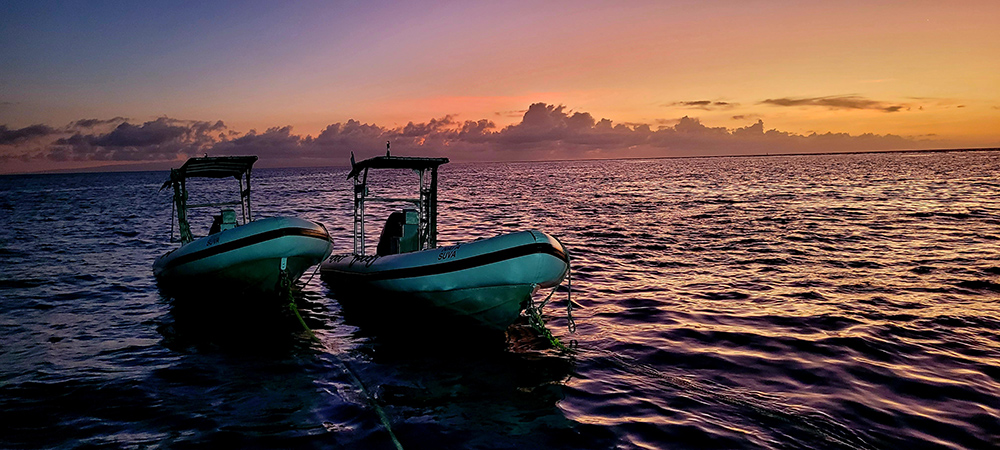
Photo by Mike: Sunset
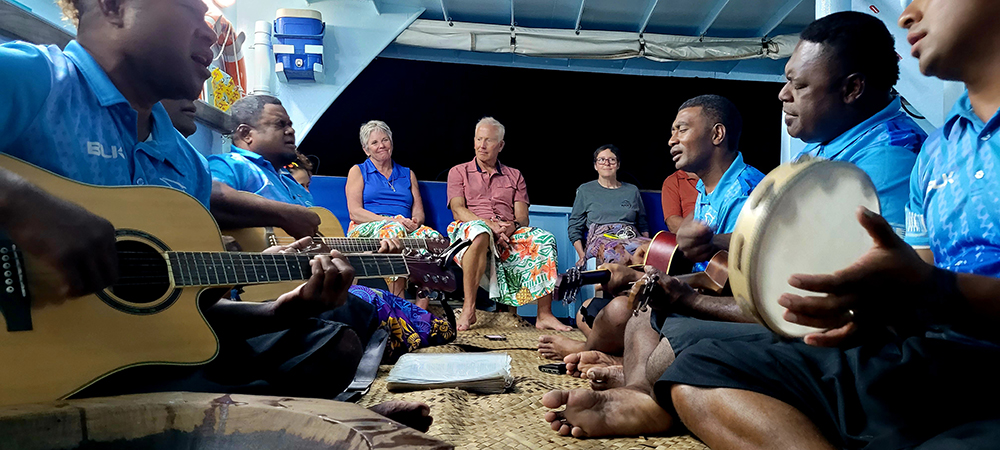
Photo by Mike: Kava time!
We moved to Vuya very gently and arrived to calm enough seas, but some of the strongest currents we’ve seen there. The first dive at Cat’s and Humann were a wild ride, but the second was absolute relaxing bliss and we could explore all sides of the stunning sites. The fish were plenty, the reefs were amazing and the fluorescent pink anemone stole the show. At UndeNAI’Able the dives were again wild, then mild. The scenery at Reef was missing just a little more sun and at Pinnacle the nudibranchs took shelter at the swim through where Tom snapped several shots, when he didn’t lose them. As the current got wilder and the wind picked up, we moved to anchor at Alacrity and explore the Sea Mounts the following day.
E6’s Cathedral as proven to be a favorite spot for many of our photographer/videographer guests, but our new spot on the bay is becoming a close second, especially with the sun shining as it was. John, Joe, Jim Q and Michael spread to try to capture the amazing colors we find on the hard corals here. Greens, blues, yellows, purples… just mesmerizing. Mount Mutiny delivered not only brighter colors with the chyronephthyas, but more hammerhead sightings and fusiliers for a lifetime. We save this site for the end of the trip whenever we can, because that’s always a great image of Fiji to send away with our guests.
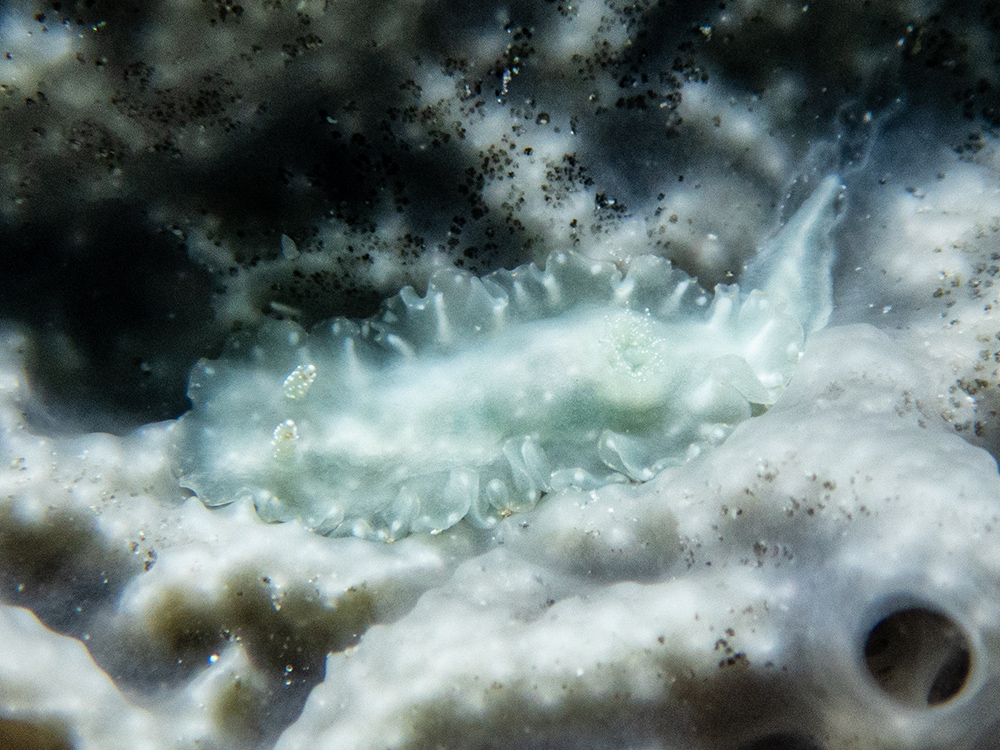
Photo by Bel (archive): Camouflaging nudibranch
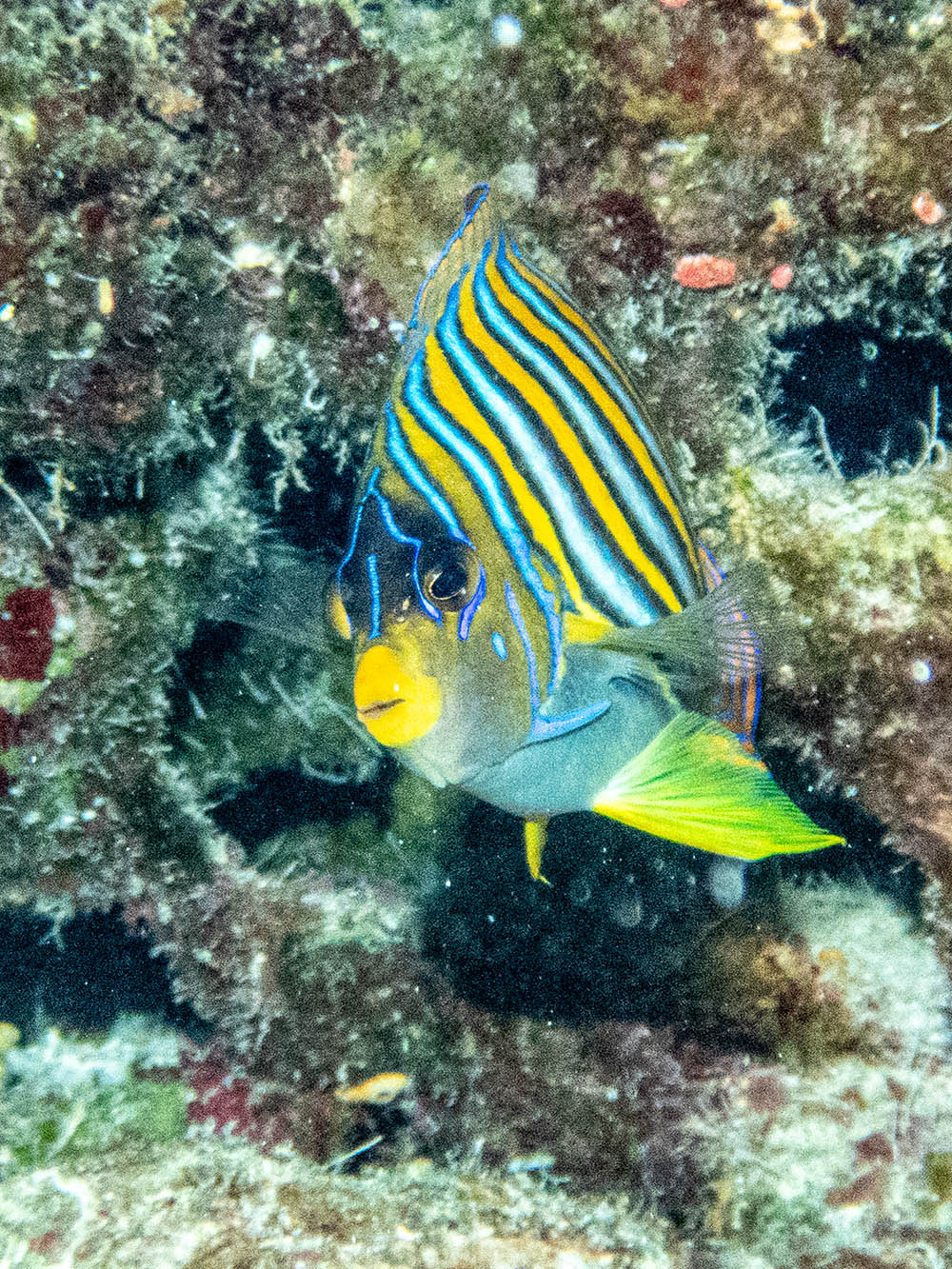
Photo by Bel (archive): Angelfish
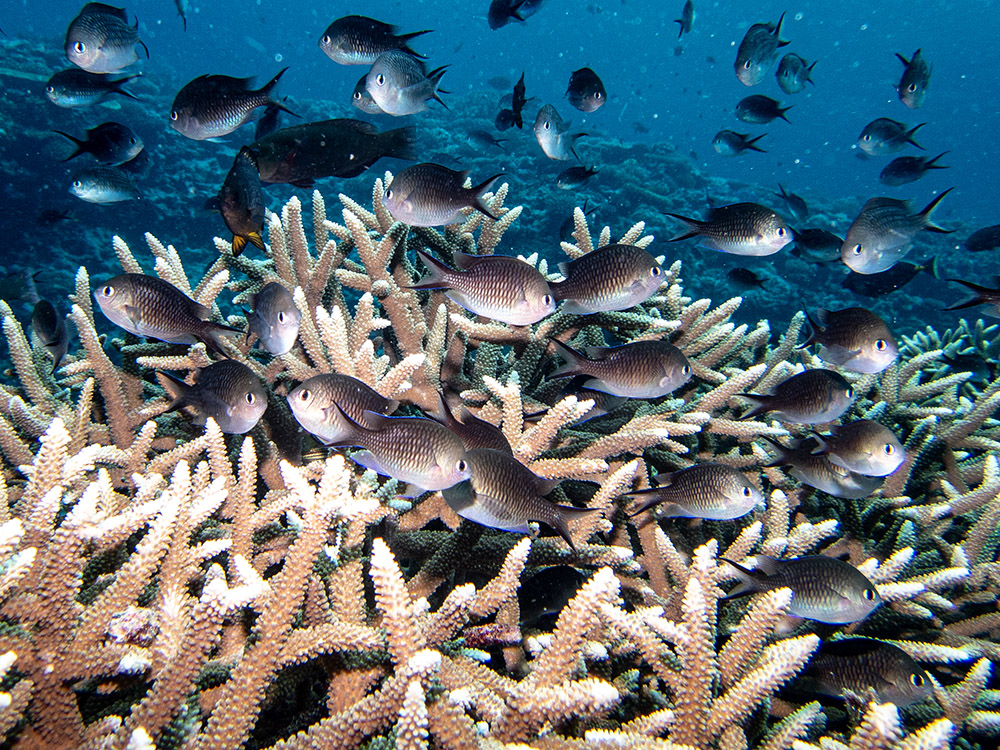
Photo by Bel (archive): Chromis and staghorn coral
A pod of pilot whales welcomed us back to Vatu-i-ra the following morning, but unfortunately they were not in the mood to play with us, so we did our three dives instead. The day followed the trend for currents: mild or wild, no in-between. Charlie’s Garden was unbelievably beautiful with the sun bringing up the colors of the corals, and Howard’s Diner keeps surprising us with how little rubble is left, replaced by amazing hard corals. Maytag and Coral Corner amazed as much as they did on day 1, and Whole Shebang was the perfect end for the trip. It started with a wild drift and finished with a mild stroll along beautiful corals. Another adventure starts tomorrow, but we already miss the friends we made (and welcomed back) on this one!
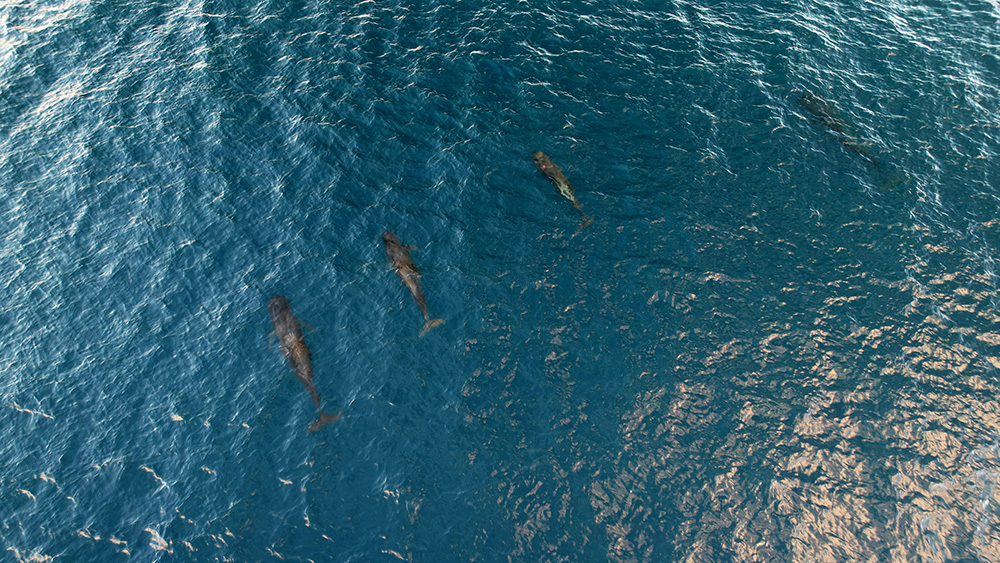
Photo by Mike: Pilot whales
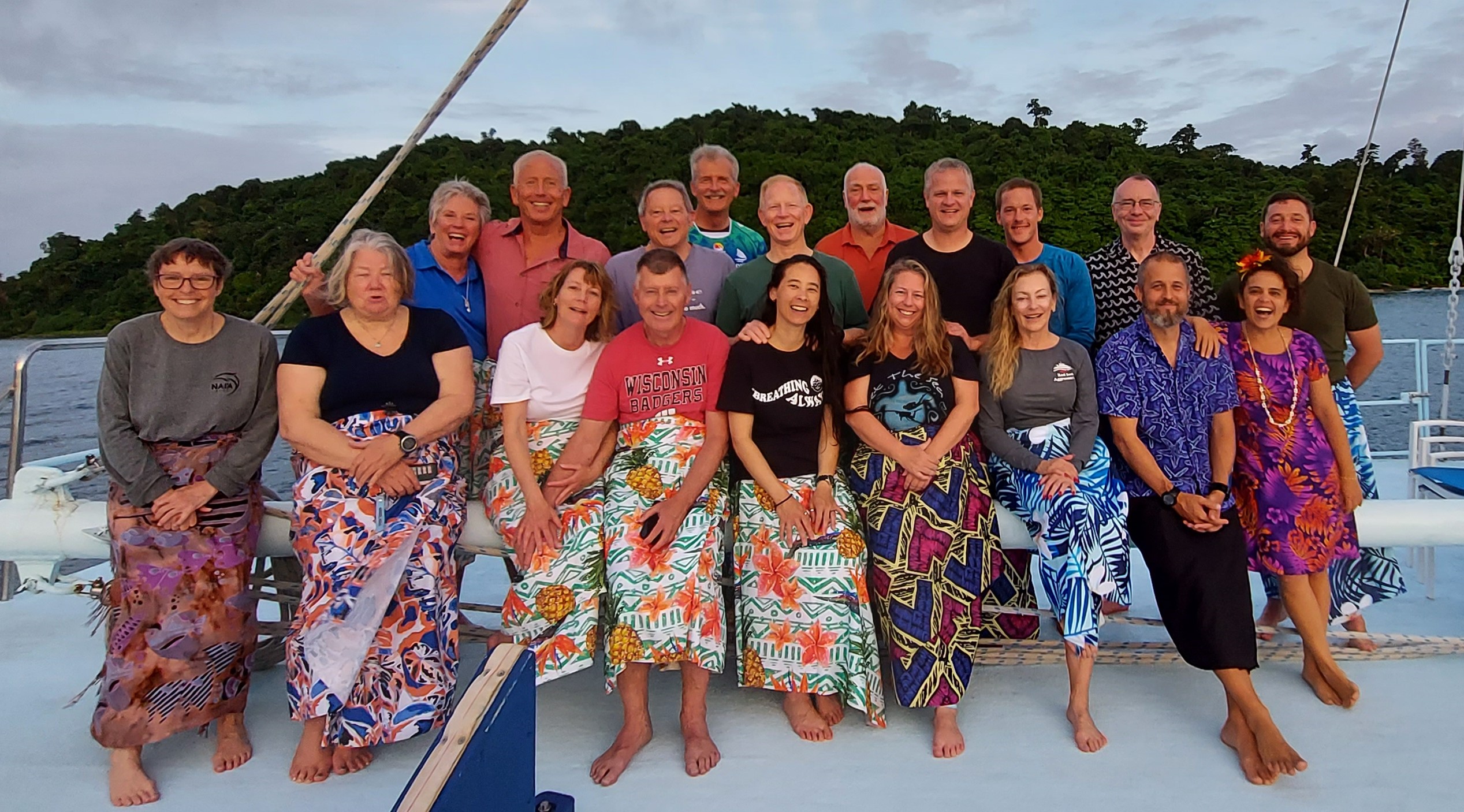
Group photo
Comments
“Lomaiviti reefs are in extremely good condition compared to Indonesia and PNG. Immediate action must be taken to conserve this unique region.”
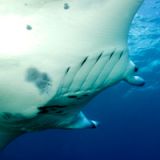
~ Dr. Michael Marnane, Marine Biologist, Wildlife Conservation Society

